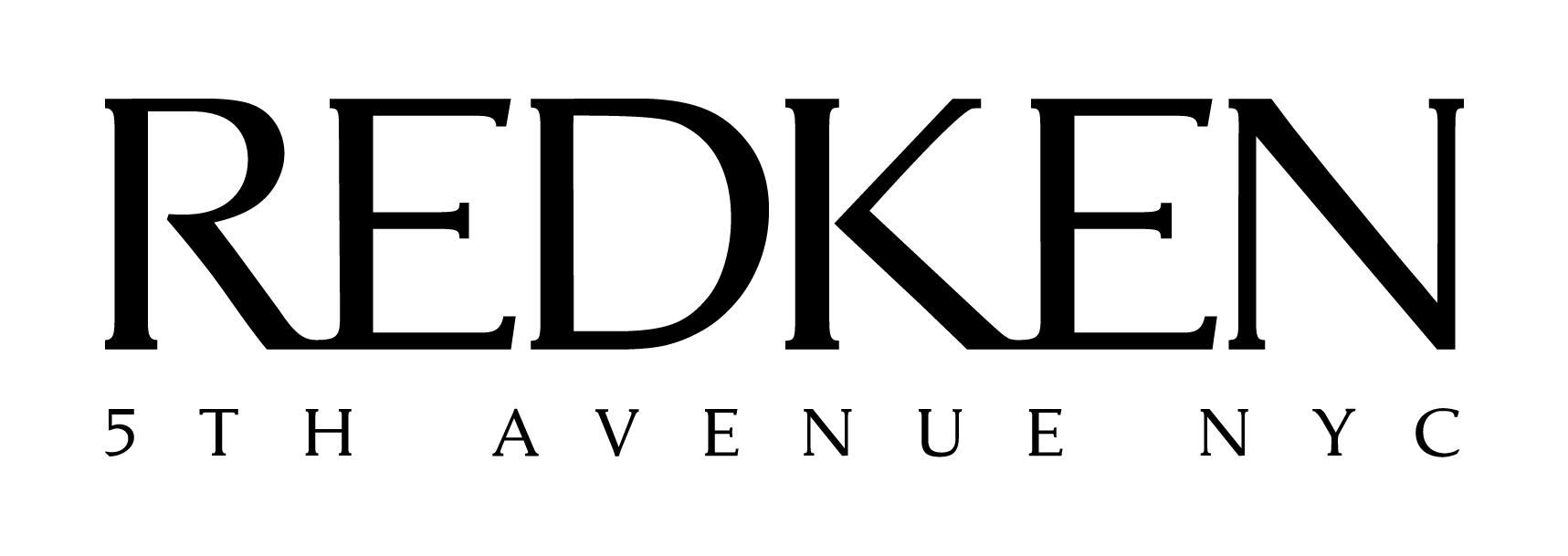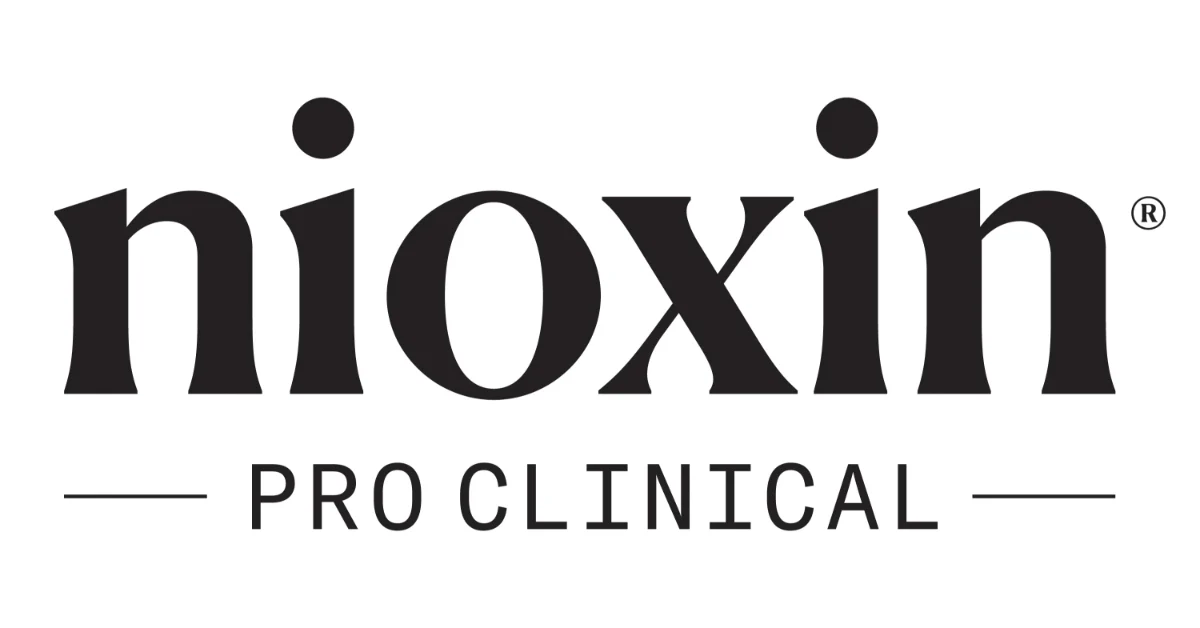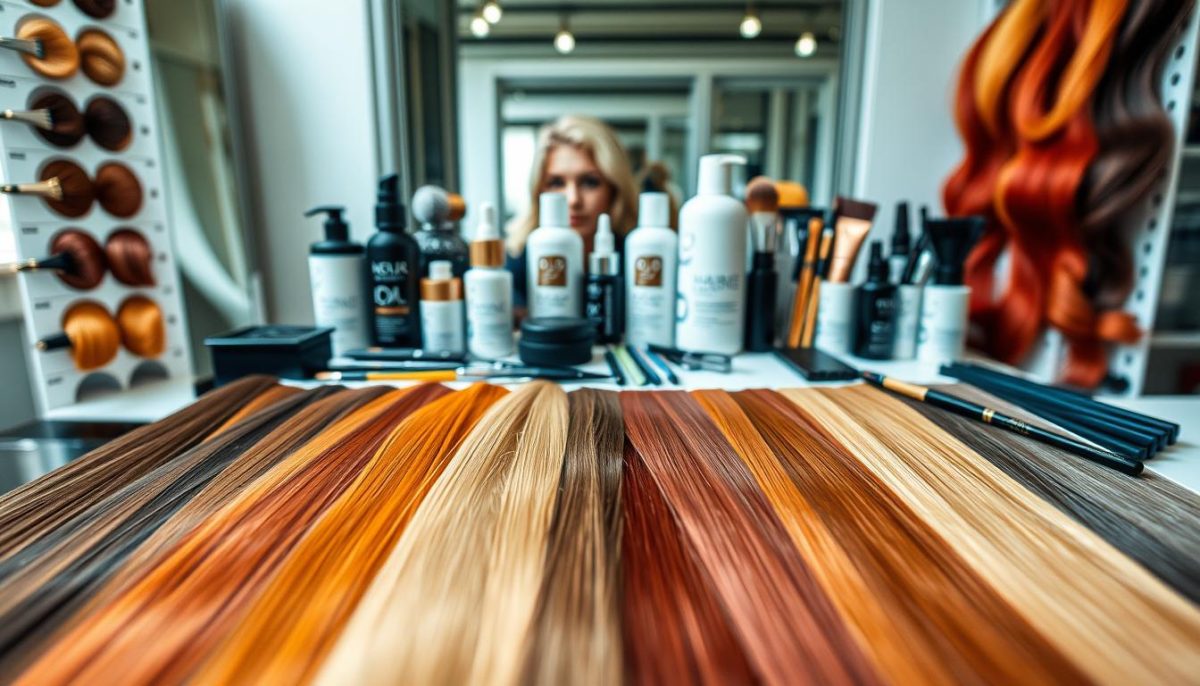FAQs, Hair Colour
How do I choose the right hair colouring product for me?
Finding the perfect hair colour product can seem daunting with so many options available. It’s important to think about our skin tones, eye colours, and style preferences when selecting. This guide will help highlight shades that boost our natural beauty in line with professional advice. It aims to simplify the process for a stunning change.
Key Takeaways
- Consider your skin tone and eye colour when choosing a hair dye.
- Research the best hair colour brands for quality and sustainability.
- Seek professional advice to find the perfect shade for your features.
- Understand the differences between permanent and semi-permanent hair colour.
- Experimenting can lead to discovering a unique personal style.
Understanding Hair Colour Basics
Delving into the realm of hair colouring necessitates a grasp of the basics. The colour wheel stands as an essential guide through the maze of hair colour shades. It aids in discerning which colours harmonise and which ones conflict. This makes choosing colours a happier journey.
The Colour Wheel and Its Importance
The colour wheel showcases the rainbow of colours and their relationships. Understanding this tool enhances our knowledge of available hair colour shades. Selecting colours opposite each other on the wheel creates vibrant contrasts. Meanwhile, neighbouring colours ensure smooth blends.
Undertones: Warm vs Cool
Recognising our skin’s undertone is crucial for selecting the right hair colour. Warm undertones sparkle with golden hues, while cool undertones display ashy or beige nuances. Knowing our undertone aids in picking hair colours that amplify our inherent beauty.
Levels of Hair Colour
Hair colour is sorted into levels from 1 to 10, beginning with black and ending at light blonde. Understanding our hair’s level paves the way for smooth colour transformations. This insight opens up a spectrum of hair colouring possibilities for a fresh, updated look.
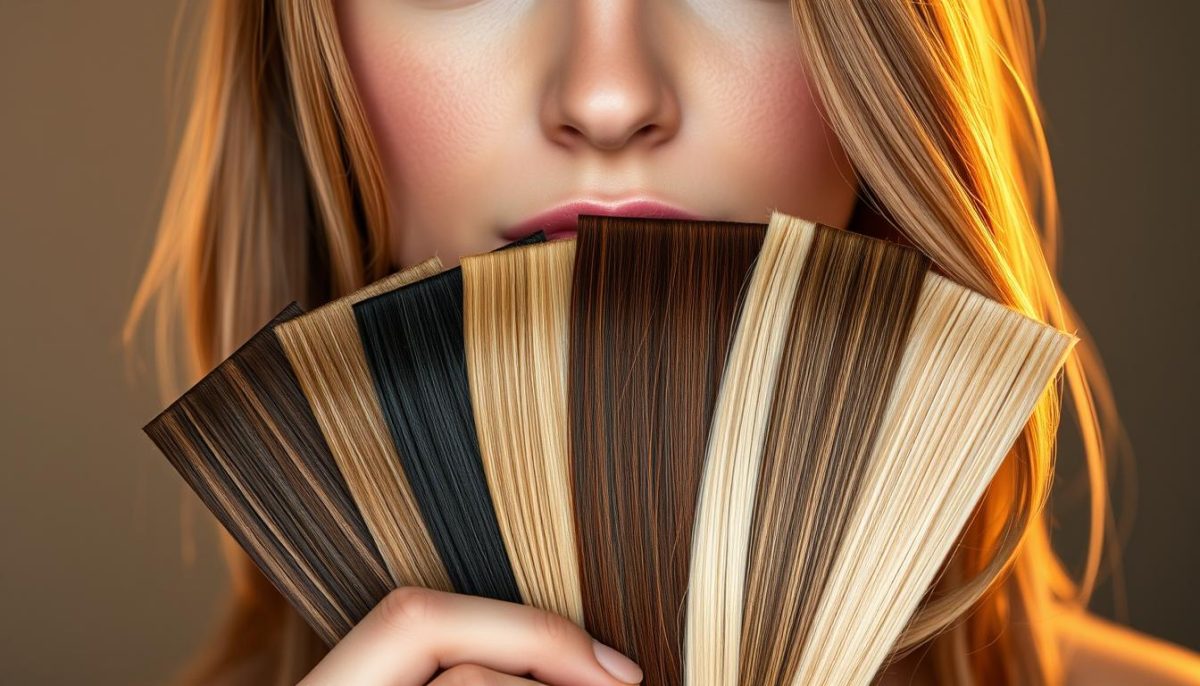
Assessing Our Hair Type
Before exploring exciting hair colour ideas, understanding our hair type is vital. Our hair’s texture, natural colour, and condition are key in picking the best shade. Trends in hair colour change often. But knowing our hair’s specifics ensures we choose what’s most flattering.
Different Hair Textures
Our hair textures vary from straight, wavy, to curly. Each texture reacts differently to colour. For example, fine hair might look better in lighter colours to seem fuller. Meanwhile, thick hair stands out in bold shades without fading. Recognizing our hair type helps us find current trends that enhance our looks.
Natural Hair Colour
Our natural hair colour affects how new colours will look. Identifying if we’re naturally blonde, brunette, or a redhead is crucial. It guides us in selecting the right colours and methods. Although trends shift, staying close to our original colour keeps our appearance cohesive.
Current Condition of Our Hair
It’s essential to check our hair’s health before colouring. If our hair is damaged or dry, it might not absorb dye well, impacting the result. Considering any recent hair treatments or environmental damage is important. Choosing colours that suit our hair’s state allows us to follow trends while keeping our hair healthy.

Finding the Right Shade
Choosing the perfect shade is more than just selecting a color. It’s a deep art that combines eye color, skin tone, and the latest trends. Understanding the interaction of these elements enables us to find a shade that compliments our personality. We aim to pick a hair colour brand that enhances our features while making us feel self-assured.
Factors to Consider
When hunting for our ideal hair color, we must ponder several factors:
- Skin Tone: Identifying whether we have a warm, cool, or neutral undertone helps in selecting shades that boost our natural glow.
- Eye Colour: Opting for shades that either match or contrast with our eye color can magnify our eyes’ beauty.
- Current Hair Condition: The health of our hair influences how it takes on color, affecting the ultimate look.
Seasonal Hair Colour Trends
Keeping up with seasonal trends can motivate new choices for our hair colour. Since popular shades shift, we might wish to consider:
- Summer: Vibrant hues like platinum blondes or bright reds match the summer atmosphere.
- Winter: Deep browns or cool blacks provide a refined and snug appearance during winter.
- Spring and Autumn: Gentle pastels or warm caramel tones are perfect for transitioning through seasons.
Consultation with a Professional
Consulting a professional stylist offers tailored advice for our unique hair type. They can suggest the most suitable hair dye brands and techniques for our complexion and lifestyle. With their help, we achieve a precise application and a result that truly reflects our desired look.
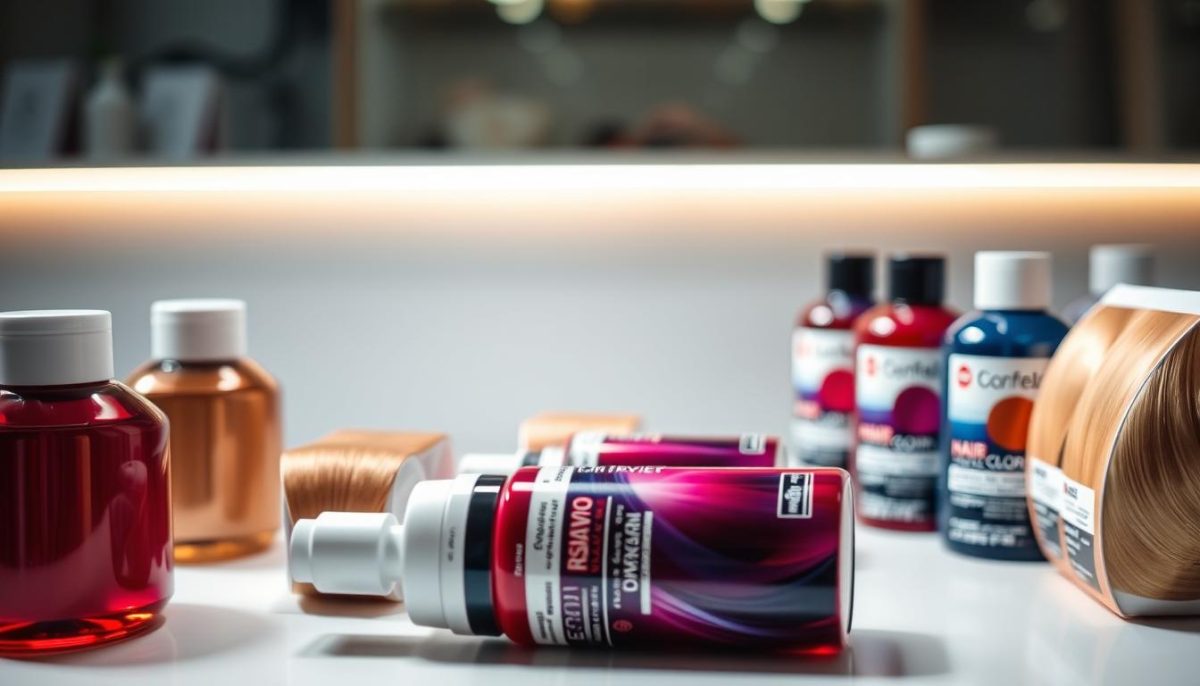
Exploring Popular Brands
In our quest for the ideal hair colour, we carefully select trusted brands to enhance our hair. The leading names offer a variety catering to different hair types and results. Whether it’s professional or organic hair colour, the choices are vast. They promise vibrant and healthy hair.
Wella: A Leader in Hair Products
Wella stands out as a top choice for hair colouring, known for its innovative formulations. Whether seeking a dramatic change or a subtle enhancement, Wella delivers. They’re committed to quality, consistently leading the industry standards.
Redken: Innovative Colour Solutions
Redken is a go-to for top-notch hair colour products, blending technology with trendsetting shades. Their focus ensures we’re always in style, providing outstanding results. Their unique formulations meet our individual needs perfectly.
L’Oreal Professional: Trusted Quality
L’Oreal Professional merges in-depth expertise with premium ingredients. Offering a broad range of professional colours, it’s easy to find our perfect match. Known for reliability, they’re a preferred choice for both colourists and DIY enthusiasts.
idHair: Creative Options for Everyone
idHair stands out for those desiring something different, offering choices for all preferences. From bold adventurers to classic styles, their focus on organic hair colour supports personal expression and hair health.
The Right Application Techniques
Choosing the correct technique for hair colouring can greatly affect our outcomes. We’re often torn between doing it ourselves at home and seeking professional salon services. Each path offers distinct advantages, from the ease of home applications to the professional finesse of salons.
At-Home vs Salon Treatments
Opting for home hair colouring offers us freedom and cost savings. Yet, achieving the ideal shade requires expertise and patience. Alternatively, salon visits provide customised experiences with expert advice. Colourists there cater to our specific needs, ensuring immaculate results.
Importance of a Patch Test
Conducting a patch test before colouring is crucial. This step helps identify any allergic reactions, protecting our scalp and skin from damage. Major brands like Wella and L’Oreal stress this precaution, highlighting the importance of our safety.
Step-by-Step Colour Application
Using a methodical approach is key, whether at home or in a salon. Here’s a brief guide:
- Preparation: Collect all needed items, such as gloves, a brush, and your hair dye.
- Sectioning: Split your hair into sections for uniform coverage.
- Application: Begin at the roots and work towards the ends with a brush.
- Timing: Follow the processing time suggested on the dye’s package.
- Rinsing: Wash your hair well with cool water and apply conditioner to seal the color.
Maintenance After Colouring
After we dye our hair, it becomes crucial to maintain the colour. We need to pick products crafted for colour-treated hair. This ensures our hair remains lively and the colour stays rich. Using the right products helps keep the shade gleaming and stunning as time passes.
Choosing the Right Shampoo and Conditioner
Finding the ideal shampoo and conditioner for coloured hair is key. Opt for ones that are rich in colour-protecting compounds. They not only safeguard our colour but also boost shine. This lets us enjoy our latest hair look while keeping it healthy and radiant.
Regular Upkeep: When to Touch-Up
Setting a touch-up routine is crucial for sustained colour brilliance. We might need root touch-ups or to refresh the ends periodically. Whether it’s salon visits or DIY at home, these regular touch-ups keep our appearance sharp. We should watch our natural hair growth to decide when to refresh our colour.
Protecting Colour from Fading
Guarding our hair against the elements is vital. Seek out products with UV filters and heat defense. They safeguard our hair from the sun and heat damage. By washing our hair less frequently, we extend our colour’s lifespan. This approach lets us remain on-trend with the latest hair colours without constant re-dying.
Understanding Ingredients in Hair Colour
Choosing the right hair dye is more complex than picking a colour. It’s crucial to understand the ingredients in hair colour products. Knowledge about what we’re applying to our hair enables informed choices. By opting for gentle, nourishing formulations, we maintain our hair’s health and beauty.
Ammonia vs Ammonia-Free Products
Ammonia is found in many traditional hair dyes, known for its strong smell and potential damage. In contrast, ammonia-free products offer a gentler solution. They’re perfect for those with sensitive scalps or damaged hair. These options ensure hair integrity while delivering vibrant colour.
The Role of Natural Ingredients
Natural ingredients are key to beautiful hair colour results. Organic options often include botanical extracts and oils that nurture our hair. Aloe vera and argan oil, for example, condition the hair while boosting shine. This leads to a healthier-looking appearance.
Avoiding Allergens in Hair Products
Being aware of potential allergens is critical when choosing hair products. Many dyes contain chemicals that may cause allergic reactions. Reading labels carefully helps us sidestep irritation. Choosing products with gentle, natural ingredients reduces risks, enabling worry-free colour changes.
Customising Our Hair Colour
Thinking about hair colouring opens up endless customisation possibilities. We have the freedom to blend various shades. Selecting from techniques like balayage or ombre lets us fully express ourselves. By mastering these methods, we not only enhance our appearance but also enrich our hair colouring journey.
Mixing Shades for a Unique Look
Mixing different shades can give us a personalised, multi-dimensional effect. Whether we seek subtlety or boldness, experimenting with combinations unveils unique hair colours. It unlocks possibilities that may have never crossed our minds before.
Balayage vs Ombre Techniques
Choosing between balayage and ombre significantly impacts our hair colour outcome. Balayage delivers a sun-kissed, natural transition. In contrast, ombre offers a dramatic, gradient look. Both methods provide exciting avenues for refreshing our hair’s appearance.
The Art of Colour Correction
Occasionally, hair colouring doesn’t go as planned. Understanding colour correction fundamentals can be liberating. It allows us to fix unwanted tones or uneven colour. Learning how to neutralise undesired shades keeps our hair vibrant and healthy.
The Psychology of Hair Colour
The choice of hair colour extends beyond simple beauty. It deeply affects our mood and self-perception. By embracing different colours, we’re not just altering our appearance; we’re reflecting our inner essence. This connection between psychology and hair colour helps us pick hues that truly match our identity.
How Hair Colour Affects Our Mood
Studies have shown that hair colour can influence our feelings. Warm shades like red and yellow might ignite excitement and energy. On the other hand, cooler tones tend to bring a sense of tranquillity. Knowing this, we can choose hair colours that not only look good but also make us feel good.
Embracing Change and New Looks
Switching up our hair colour is a powerful way to signal change. It could be a striking blue to assert boldness or gentle pastels for a lighter vibe. This act of transformation can significantly boost our confidence and refresh our identity.
Colour and Personal Identity
Our hair colour is a personal statement. It showcases our individual style and personality. From natural shades to bold hues, the colour we choose speaks to our uniqueness. It’s a symbol of our personal journey and how we wish the world to see us.
Sustainable Hair Colour Options
There’s a growing demand for sustainable practices within the beauty sector, extending into how we dye our hair. Eco-friendly brands are gaining attention, offering colours that protect the planet. By choosing these products, we support a healthier lifestyle and environmental care.
Eco-Friendly Brands to Consider
Many brands now provide organic hair dyes that cater to beauty needs while focusing on sustainability. Prominent among these are:
- Herbatint: Known for its natural ingredients and plant-based formulas.
- Oway: A pioneer in biodynamic hair colour, utilising environmentally responsible farming methods.
- Organic Colour Systems: Focused on ammonia-free and 100% organic hair colour solutions.
The Benefits of Organic Hair Colour
Choosing organic hair dye offers several benefits. Such products generally include less harsh chemicals, minimizing scalp irritation risks. They’re also better for the environment, thanks to biodegradable contents and sustainable packaging. By selecting organic dyes, we enjoy gorgeous hues and help preserve our ecosystem.
Recycling and Reusing Hair Products
Equally important is our dedication to recycling and reusing hair product packaging. This commitment significantly cuts down on waste. There are several ways to contribute, including:
- Returning empty containers to eco-conscious brands that advocate for recycling.
- Seeking out local recycling initiatives for beauty product packaging.
- Repurposing containers for household use or creative projects.
Common Colouring Mistakes to Avoid
Embarking on our hair dye journey requires avoiding common pitfalls for the best results. Understanding these mistakes is vital to achieving vibrant, healthy hair. We aim to embrace new hair colour trends successfully. It’s all about getting that perfect, dynamic look without compromise.
Overlapping Colour Applications
Overlapping colour applications are a frequent mistake. It often happens when we dye already coloured hair. This can lead to a patchy, uneven look. The new colour might become too intense or too muted in previously dyed areas.
To ensure vibrancy and balance, careful application is key. We must avoid putting dye on areas that have already been treated. This will help maintain the hair’s health and overall appearance.
Ignoring Hair Type Differences
Each hair type has unique needs that shouldn’t be ignored. Different textures and conditions affect dye interaction and colour retention. For example, fine hair may require lighter dye formulations.
Conversely, coarse hair could benefit from richer, moisturising dyes. Knowing our hair type helps choose suitable products. This choice allows for desired effects without damaging our hair.
Underestimating the Importance of Care
Our journey doesn’t stop at application. The significance of aftercare is often underestimated by many. Proper care is essential to maintain our chosen hair colour. Specialised shampoos and conditioners are crucial for colour-treated hair.
Regular treatments and protective steps ensure lasting colour brilliance. They allow us to continually embrace inspiring hair colour trends.
Seasonal Hair Colour Choices
As the seasons shift, we’re drawn to try new hair colour ideas that echo nature’s hues. The perfect colour choice can lift our seasonal wardrobe, giving us a renewed, vibrant edge. We’ll explore enticing options that mirror each season’s charm.
Summer Shades for Radiance
Summer calls for colours that mimic the sun’s warmth. We lean towards lighter, bright hues. Think glowing blondes, gentle caramels, and vibrant pastels. These choices exemplify summer’s energetic vibe, infusing our hair with a luminous quality.
Winter Colours to Cozy Up
In winter, we seek shades that add a feeling of warmth and comfort. Opt for dark browns, rich auburns, and bold reds. These colours match the season’s snug essence. They complement the festive mood, enhancing our style with elegance.
Spring and Autumn Transitions
The switch between spring and autumn allows for creative colour play. Spring inspires with light pastels and balayage, echoing budding flowers. In contrast, autumn demands richer, earthy tones like orange and burgundy. This approach enables smooth style transitions, keeping our appearance fresh as seasons change.
The Cost of Hair Colouring
Starting our hair colouring adventure, we must think about different costs. Hair colour treatments vary in price, from budget options to higher-end salon services. Knowing these prices lets us achieve stunning looks without straining our wallets.
Budget-Friendly Options
For budget-conscious individuals, numerous best hair colour brands have affordable at-home dyes. These products can deliver vibrant colours and are easy to use. By choosing the appropriate colour and following instructions, you can achieve professional-looking results on a budget.
Investing in Quality Products
Opting for professional hair colour usually involves high-quality products. Many hairdressers select brands that are praised for lasting effects and nourishing components. Spending on professional colouring may lead to healthier and glossier hair, outlasting cheaper options.
Understanding Treatment Costs
Heading to a salon requires understanding what influences treatment prices. Costs are shaped by the product brand, stylist’s expertise, and the complexity of your wished-for style. Discussing with our stylist lets us align our hair goals with our budget.
Resources for Further Learning
The quest to master hair colouring leads us to numerous resources that can deepen our knowledge and improve our skills. Books, online courses, and workshops on hair colour are available for all skill levels. Learning from seasoned experts not only sharpens our abilities but also guides us in making smarter choices. This includes the decision to use organic hair colours.
Recommended Books on Hair Colouring
- The Art of Hair Colouring by a famous hair artist outlines key methods and trends.
- Hair Colouring for Dummies provides an easy-to-understand introduction for novices.
- Organic Hair Colour: Nature’s Palette delves into natural techniques and eco-friendly approaches.
Online Tutorials and Workshops
Participating in online workshops offers practical learning from home. Hair education websites present specific tutorials, including organic hair colour application. These sites invite industry pros to impart their wisdom and techniques.
Professional Hair Colourist Directories
Locating an adept hair colourist can significantly elevate our hairstyle game. Professional directories are key to connecting with top hair colour experts locally. They’re useful whether we’re seeking guidance or wish to book a consultation for organic hair colour treatment. Such resources are crucial in navigating our hair colour journey successfully.
Conclusion: Embracing Our Hair Colour Journey
Through our hair colour journey, we learn to value how each choice contributes to our uniqueness. The vast array of dye options lets us express ourselves freely. Experimenting with diverse shades, we proudly display our fashion sense.
Understanding the products and methods available aids us in making savvy decisions. Whether seeking expert advice or applying dye ourselves, we welcome the changes hair colour introduces. The lively colours we choose are a mirror of not just how we look but who we are.
Final Thoughts
As we wrap up our discussion on hair colour, let’s underscore that choosing the perfect dye is deeply personal. It mirrors our individuality and fashion sense, empowering us to showcase our true selves. Through a solid grasp of hair colour essentials and awareness of current trends, we’re well-equipped to make choices that enhance our looks dramatically.
This guide aimed to equip you with insights for your hair colour journey. Adopting correct techniques and upkeep will ensure our shades remain brilliant. Whether we go for soft hues or vibrant colours, it’s a testament to our distinctiveness.
Embracing hair colour should be done with assurance, imagination, and wisdom. Our selections are as dynamic and particular as we are. Let’s make each hair colouring adventure a chance for personal expression and happiness.




